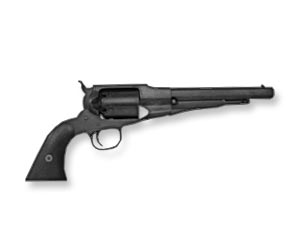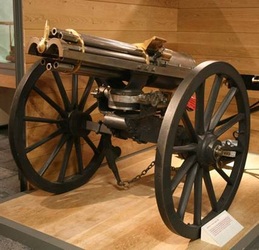Small Arms
The Civil War witnessed a technological revolution in weaponry. This was highlighted by a changeover in shoulder-fired weapons from smoothbore firearms that had to be loaded through the muzzle each time a shot was fired to rifled-barrel firearms, some of which loaded at the breech. Most of these new rifle-muskets still had to be loaded between each shot, but repeating weapons such as 7-shot Spencer and 20-shot Henry rifles and carbines were developed as well. Unfortunately for the common soldier, tactics did not advance as quickly as technology. Napoleonic linear tactics from earlier in the century now combined with more accurate, faster-firing weapons to result in catastrophic casualty figures throughout the War.
The Confederacy, whose industrial base was far weaker than the Union's when the war began, accomplished a great feat by establishing a viable arms-manufacturing capability in short order. The North's industrial machine also swung into high gear to produce huge quantities of weapons and ammunition. Agents from both the Union and the Confederacy scoured the shelves of European arms-dealers to ensure that their armies had an adequate supply of weapons. The rifle-musket most Confederate infantrymen favored was the English-manufactured Enfield.
The Confederacy, whose industrial base was far weaker than the Union's when the war began, accomplished a great feat by establishing a viable arms-manufacturing capability in short order. The North's industrial machine also swung into high gear to produce huge quantities of weapons and ammunition. Agents from both the Union and the Confederacy scoured the shelves of European arms-dealers to ensure that their armies had an adequate supply of weapons. The rifle-musket most Confederate infantrymen favored was the English-manufactured Enfield.
Remington 1861
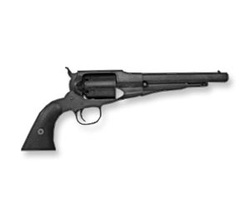
Gatling gun
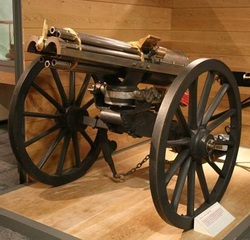
The Gatling gun saw only limited use in the Civil War, (Ben Butler used two around Petersburg and eight on gunboats; Porter acquired one; and Hancock ordered twelve for his I (Veteran) Corps), however, the conflict did test this weapon, perhaps the first successful true machine gun used in warfare. Invented by Dr. Richard Jordan Gatling, the Civil War model served as the precursor of more successful models.
The Gatling gun was a hand-crank-operated weapon with 6 barrels revolving around a central shaft. The cartridges were fed to the gun by gravity through a hopper mounted on the top of the gun. 6 cam-operated bolts alternately wedged, fired, and dropped the bullets, which were contained in steel chambers. Gatling used the 6 barrels to partially cool the gun during firing. Since the gun was capable of firing 600 rounds a minute, each barrel fired 100 rounds per minute.
The Gatling gun was a hand-crank-operated weapon with 6 barrels revolving around a central shaft. The cartridges were fed to the gun by gravity through a hopper mounted on the top of the gun. 6 cam-operated bolts alternately wedged, fired, and dropped the bullets, which were contained in steel chambers. Gatling used the 6 barrels to partially cool the gun during firing. Since the gun was capable of firing 600 rounds a minute, each barrel fired 100 rounds per minute.
1861 Springfield
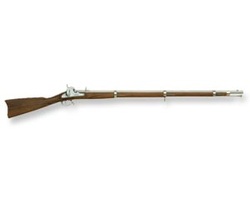
The Springfield Model 1861 is the classic small arm of the Civil War. They were produced at the Springfield armoury and by 20 contract companies for use by Northern troops (Confederate troops captured the Harpers Ferry arsenal very early in the war and moved the machinery south. What was left of the armoury was destroyed). Contract arms were identical to those made at the Springfield Armoury with the exception of the manufacturer's name stamped on the lockplate. Over 700,000 '61 Springfields were produced. They saw service with both the Regular and Volunteer Regiments. These were coveted arms often being replacements for lower quality foreign or earlier smooth bores. Once troops got hold of a Springfield, they did not let them go. This piece features a one-piece forged barrel; military style sights; steel butt plate, triggerguard and barrel bands; swelled ramrod like the original musket. The lock is marked “1861 Springfield” with an eagle. One piece walnut oil finished stock.
